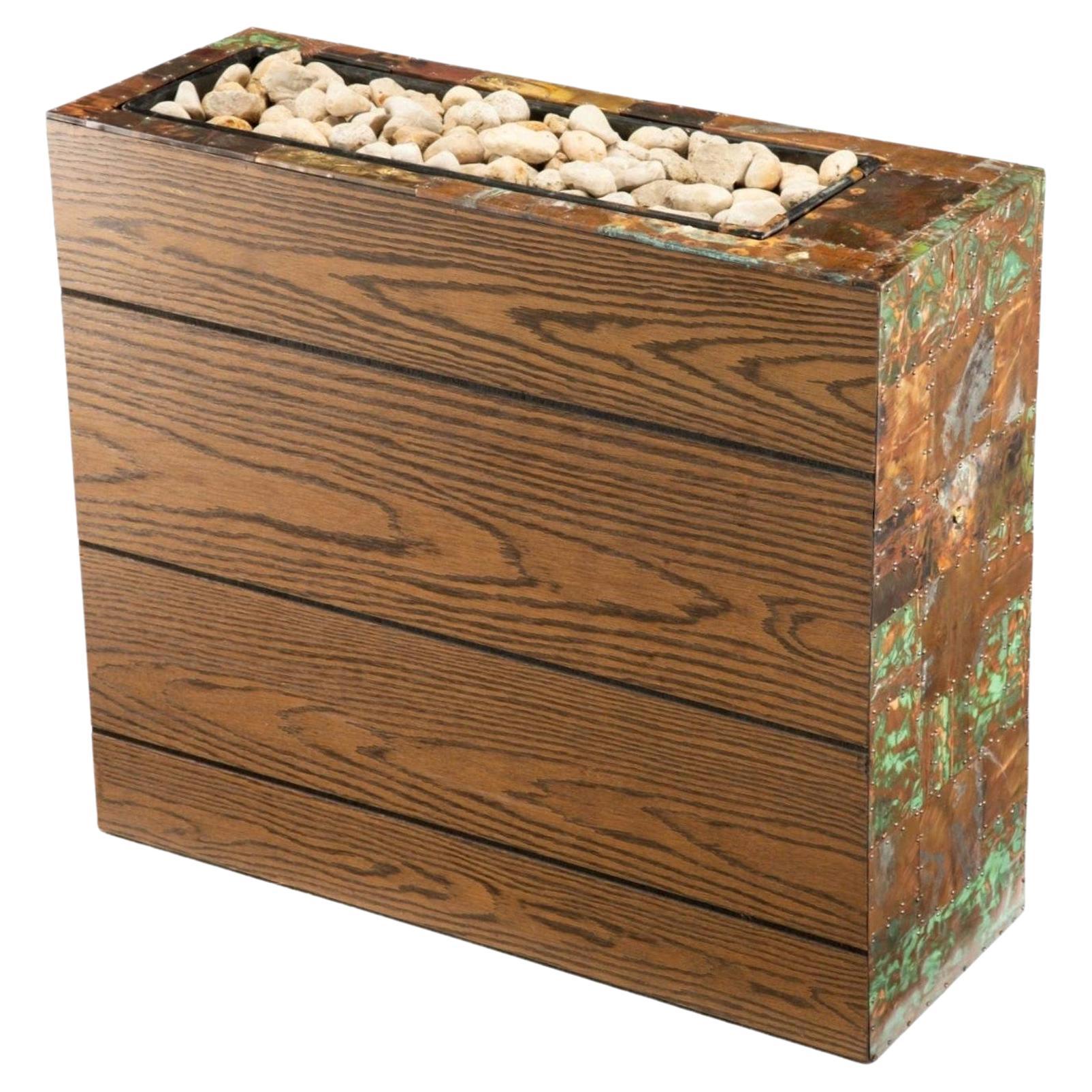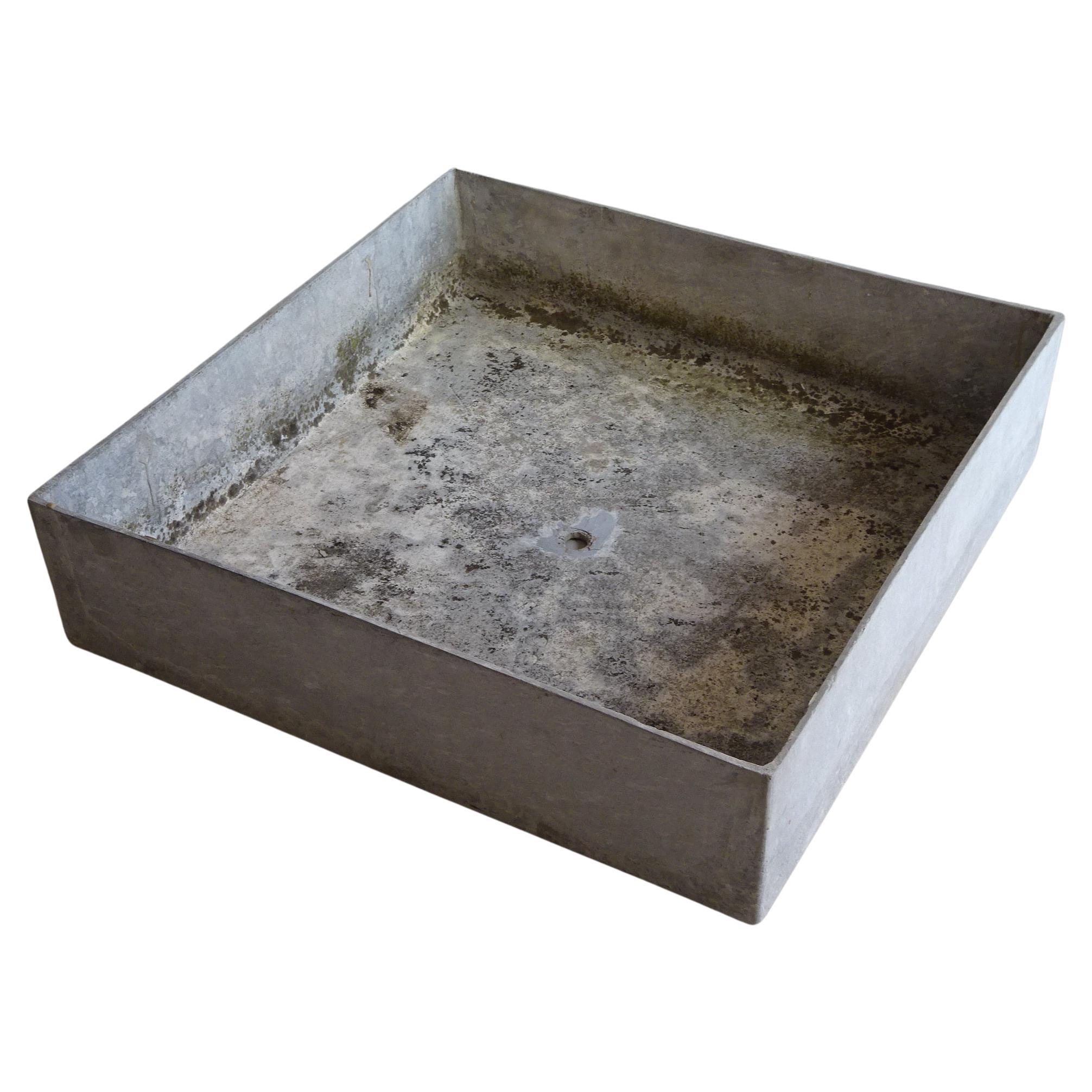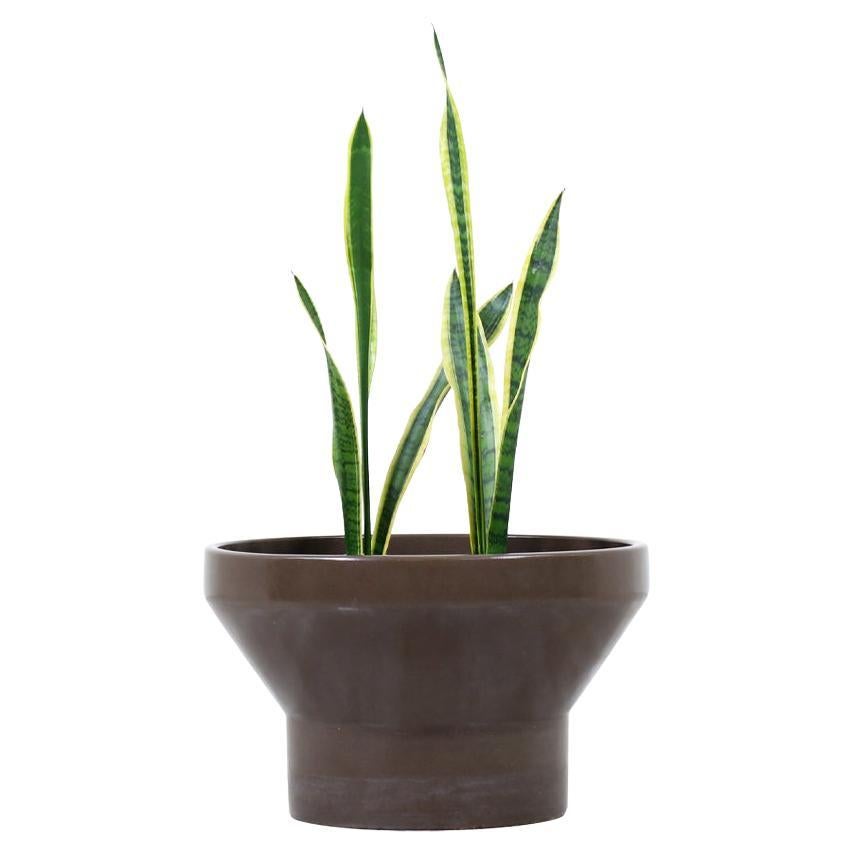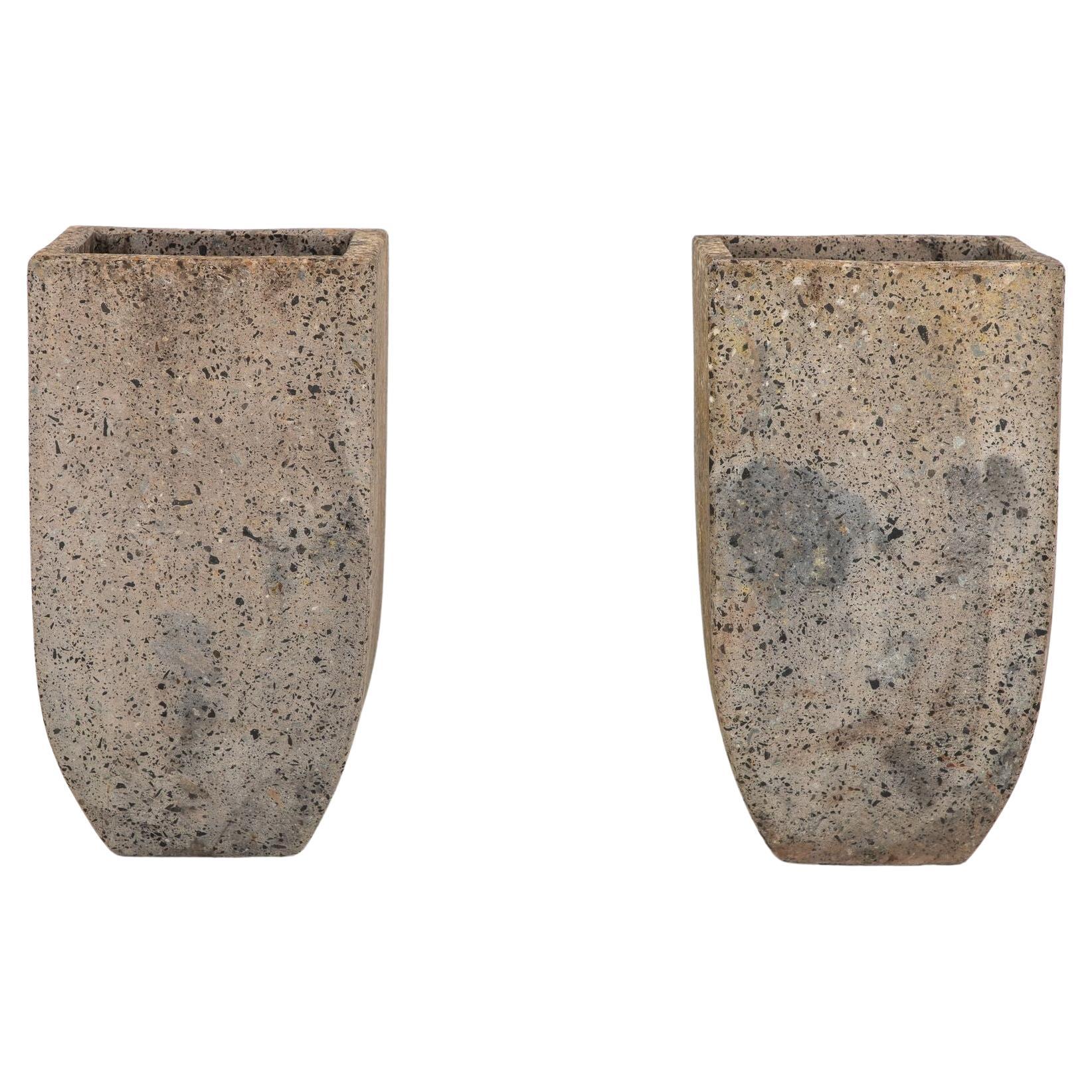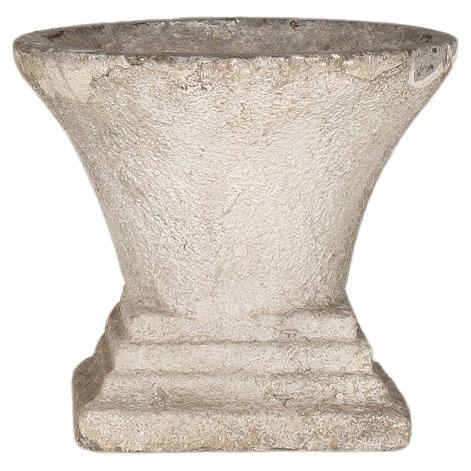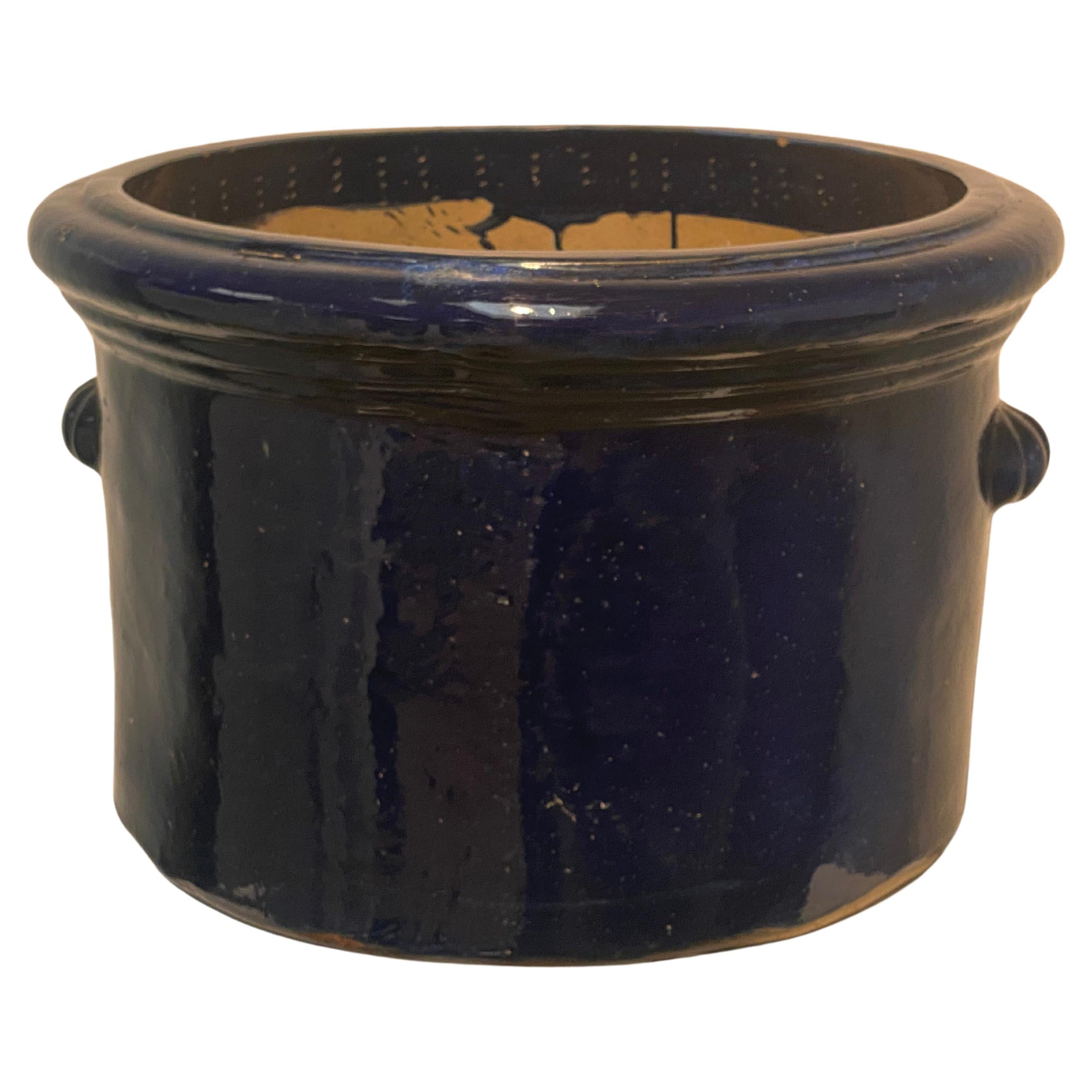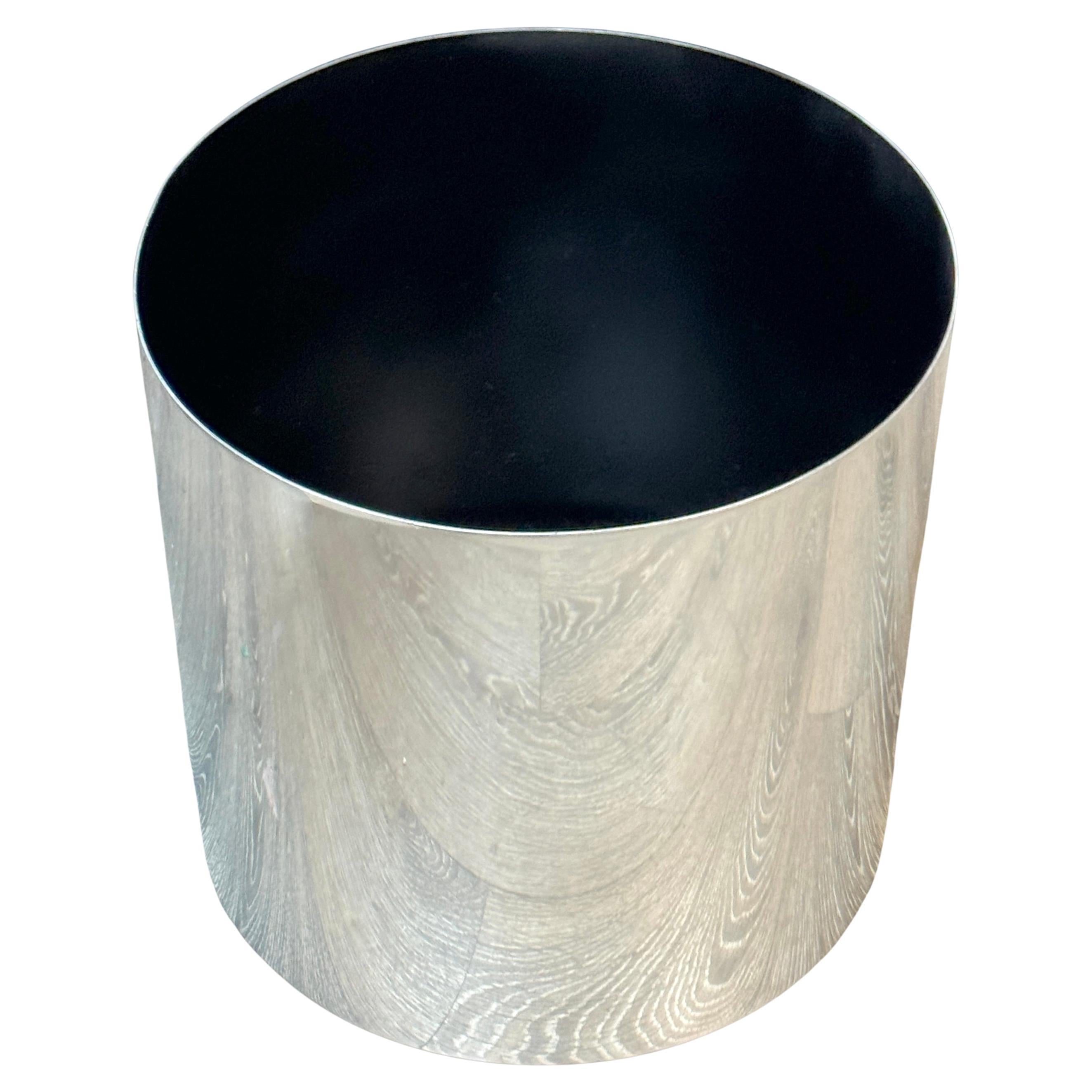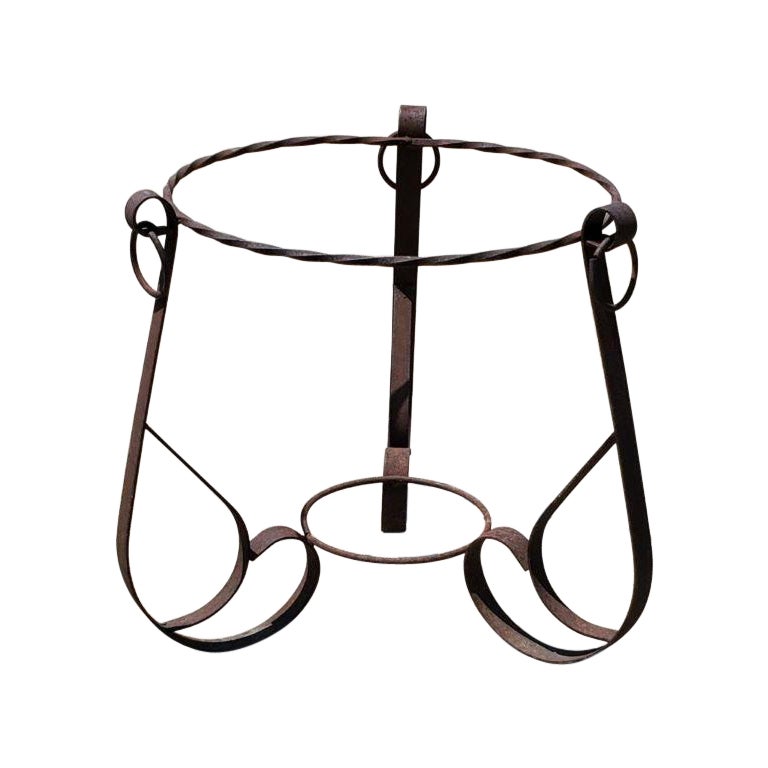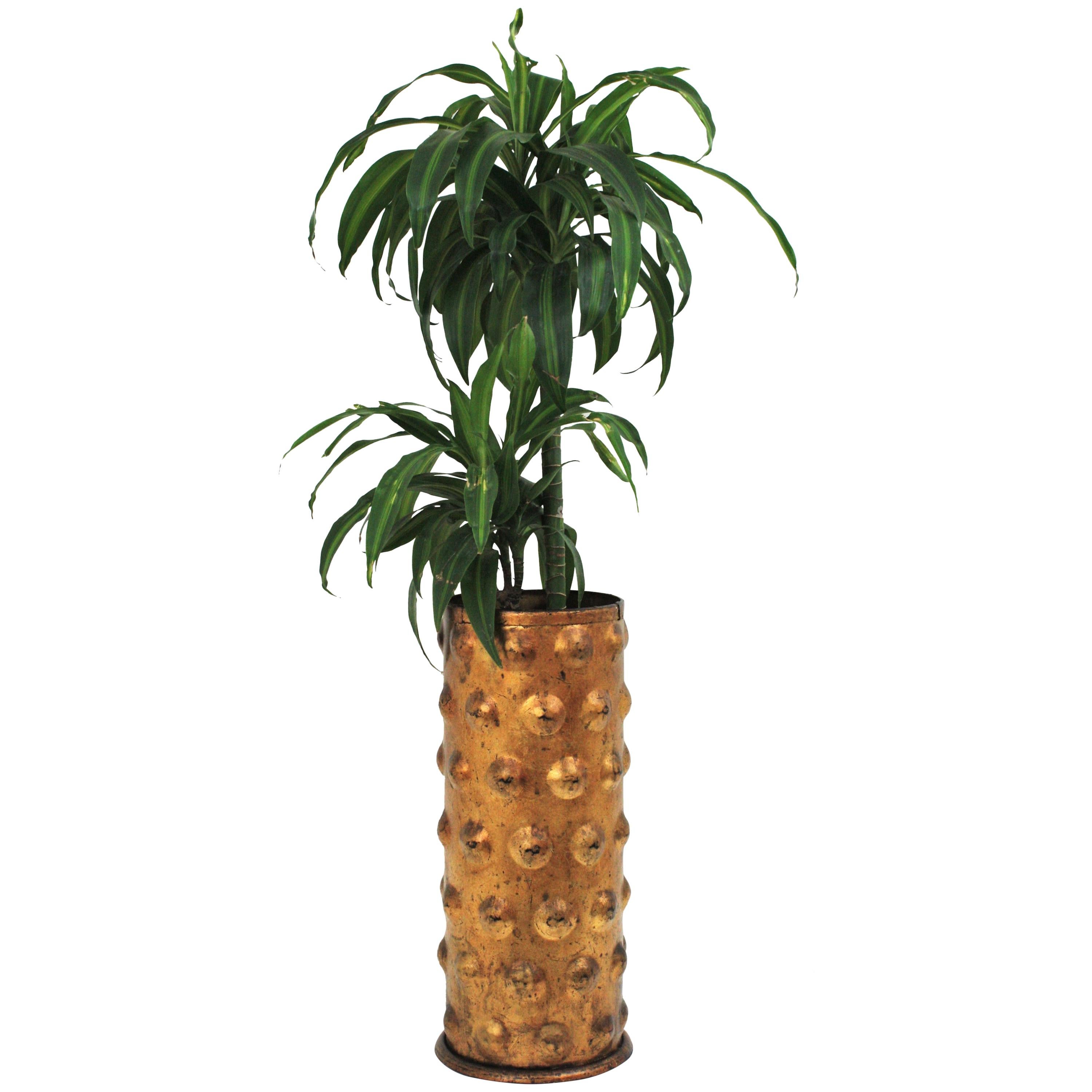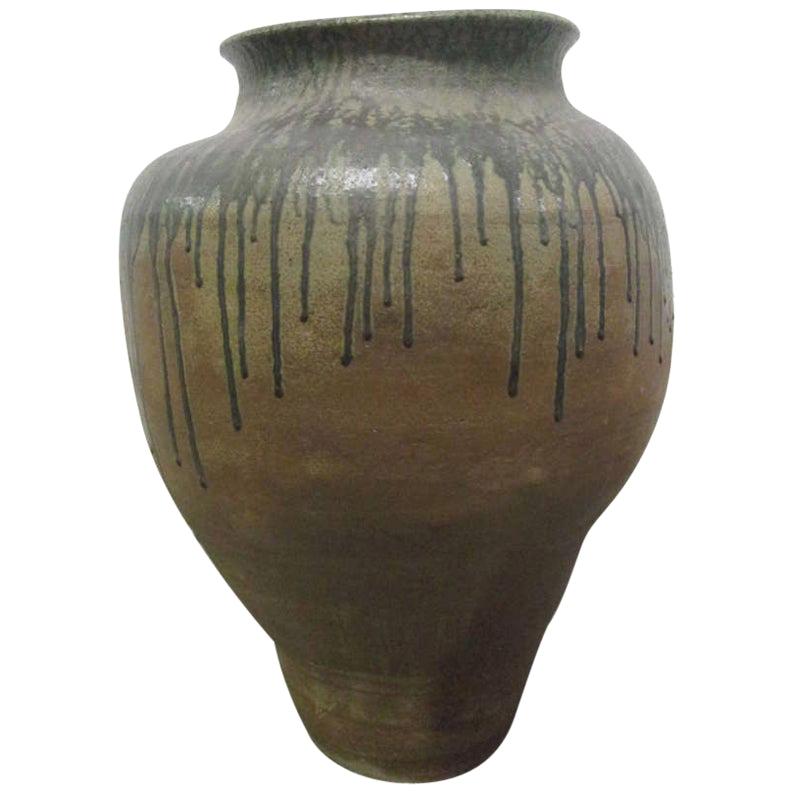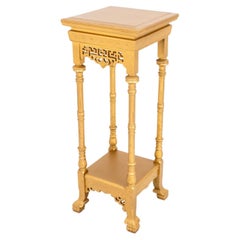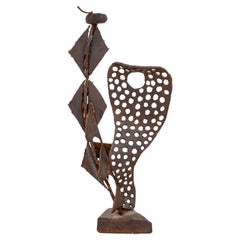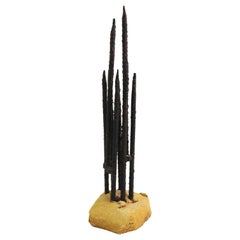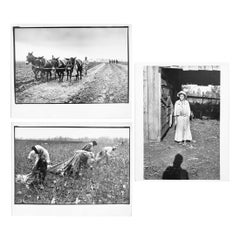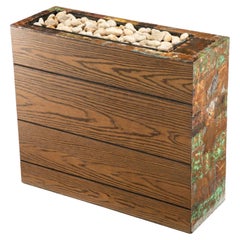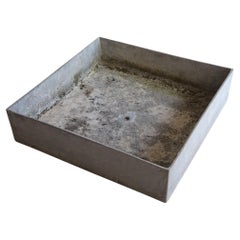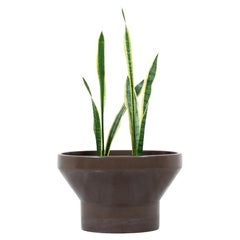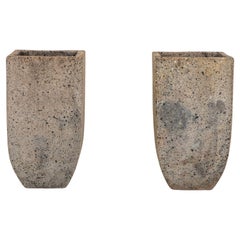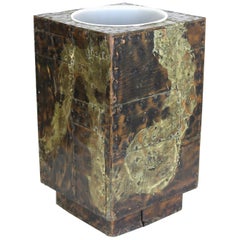
Paul Evans for Directional Brutalist 'Patchwork' Planter
View Similar Items
Paul Evans for Directional Brutalist 'Patchwork' Planter
About the Item
- Creator:Directional (Maker),Paul Evans (Designer)
- Dimensions:Height: 17.5 in (44.45 cm)Width: 10 in (25.4 cm)Depth: 10 in (25.4 cm)
- Style:Brutalist (Of the Period)
- Materials and Techniques:
- Place of Origin:
- Period:
- Date of Manufacture:1970s
- Condition:Wear consistent with age and use. Dent to one of the lower corners.
- Seller Location:Astoria, NY
- Reference Number:Seller: S138XX - 74669 - 03211stDibs: LU889322733362
Paul Evans
A designer and sculptor, Paul Evans was a wild card of late 20th century modernism. A leading light of the American Studio Furniture movement, Evans’s sideboards, credenzas, coffee tables and other work manifests a singular aesthetic sense, as well as a seemingly contradictory appreciation for both folk art forms and for new materials and technologies.
Evans’s primary material was metal, not wood, which was favored by his fellow studio designers, and Bucks County, Pennsylvania, neighbors George Nakashima and Phillip Lloyd Powell. He trained in metallurgy and studied at the Cranbrook Academy of Art, the famed crucible of modern design and art in suburban Detroit. For a time early in his career, Evans also worked at Sturbridge Village, a historical “living museum” in Massachusetts, where he gave demonstrations as a costumed silversmith.
Evans’s earliest work unites these influences. The pieces that made his reputation are known as “sculpted-front” cabinets: wood cases faced with box-like high-relief patinated steel mounts laid out in a grid pattern. Each mount contains a metal emblem, or glyph, and the effect is that of a brawny quilt.
Evans’s later work falls into three distinct style groups. His sculpted-bronze pieces, begun in the mid-1960s, show Evans at his most expressive. He employed a technique in which resin is hand-shaped, and later sprayed with a metal coating, allowing for artistic nuance in the making of chairs, tables and case pieces. Later in the decade and into the 1970s, Evans produced his Argente series for celebrated manufacturer Directional (a brand known to vintage mid-century modern furniture collectors everywhere): consoles and other furniture forms that feature aluminum and pigment-infused metal surfaces welded into abstract organic forms and patterns.
Last, Evans's Cityscape design series — a milestone in the history of brutalist design — meshed perfectly with the sleek, “high tech” sensibility of the later ’70s. Evans constructed boxy forms and faced them with irregular mosaic patterns that mixed rectangular plaques of chromed steel, bronze or burlwood veneer. These, like all of Paul Evans’s designs, are both useful and eye-catching. But their appeal has another, more visceral quality: these pieces have clearly been touched by an artist’s hand.
Find a collection of authentic Paul Evans furniture today on 1stDibs.
Directional
A brand known to vintage mid-century modern furniture collectors everywhere, Directional Furniture opened its doors after American furniture designer Paul McCobb created the high-end Directional Modern line of sofas distributed by the New York–based Modernage Company.
In his pivotal introduction of postwar modernism to the mass market, the revered Massachusetts-born McCobb had established several lines, from the affordable and refined Planner Group for Winchendon to the swooping and unexpected arms of the Symmetric Group for Widdicomb, a Shaker-inspired collection that included a sofa and a lounge chair. Like all of McCobb’s designs, the Directional pieces for Modernage are defined by a sleek aesthetic in which the focus is on elegant functionality, frequently using fine materials such as brass and walnut. In 1949, in partnership with New York furniture salesman B.G. Mesberg, McCobb set up the Directional Furniture Company.
The pair’s first pieces were upholstered chairs, intended to harmonize with the modular Multiplex pieces designed by Martin Feinman. McCobb then designed an array of furniture including storage, dining, seating, desks and other pieces with details such as leather tops, wood finishes and Roman Travertine surfaces. While Directional stopped production of McCobb’s work in the early 1960s, it still released numerous pieces by leading designers manufactured by a variety of companies.
Designer Paul Evans led the factory for a time after joining in 1964. His provocative work for the company often reflected his understanding of materials from his early training as a silversmith, such as the popular Cityscape series — a milestone in brutalist design — with its blocky forms accented with brass and chrome. At his shop in Lambertville, New Jersey, he collaborated with a design team to clad furniture pieces in metallic surfaces, like the Argente line that began production in 1968 and involved an acetylene torch to give its aluminum material a textural quality. He also worked on the Sculpted Bronze series with hand-formed resin shaped over plywood or steel that was then coated with atomized bronze.
Other Directional designers included Vladimir Kagan, who contributed biomorphic sofas and swivel chairs; Milo Baughman, who created tables and dressers inspired by Scandinavian modernism; and Jack Lenor Larsen, who covered sofas in dynamically patterned fabric.
Find authentic Directional Furniture seating, tables, case pieces and storage cabinets from top sellers around the world on 1stDibs.
More From This Seller
View All20th Century Unknown Neoclassical Planters and Jardinieres
Wood
Mid-20th Century Brutalist Sculptures and Carvings
Metal
Vintage 1970s American Brutalist Abstract Sculptures
Metal
20th Century American Colonial Photography
Paper
Late 20th Century Unknown Mid-Century Modern Floor Lamps
Brass
Mid-20th Century Modern Floor Lamps
Metal
You May Also Like
Mid-20th Century American Industrial Planters and Jardinieres
Metal, Copper, Steel
Vintage 1960s Swiss Mid-Century Modern Planters and Jardinieres
Cement
Vintage 1960s American Mid-Century Modern Planters and Jardinieres
Ceramic
Late 20th Century European Brutalist Planters and Jardinieres
Concrete
Mid-20th Century French Brutalist Planters and Jardinieres
Concrete
Vintage 1970s Spanish Planters and Jardinieres
Terracotta
